-
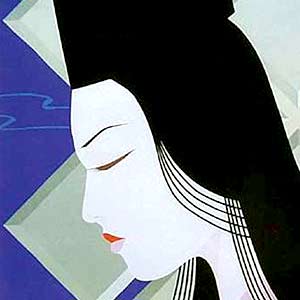
Lady Otsuya
-1575Lady Otsuya was the aunt of warlord Oda Nobunaga, who played a major role in unifying Japan during the Sengoku period. Lady Otsuya is said to have been a great beauty, and was married to Lord Toyama Kageto, the master of Iwamura Castle, but the couple were childless, and so they adopted Oda Nobunaga’s fifth son, Gobomaru. Toyama Kageto died of illness in 1572 and so Lady Otsuya became the de facto lord, taking command of Iwamura Castle.
Two months after her husband, died, the Oda clan’s rival Takeda clan besieged the strategically important Iwamura Castle in order to seize it. Lady Otsuya was facing the greatest of crisis, until the besieging general, Akiyama Torashige proposed that Lady Otsuya marry him, saving the castle and its garrison from destruction. Otsuya accepted the conditions.
However, to ensure all went smoothly, Torashige sent young Gobomaru to the enemy Takeda clan as a hostage. On discovering the fates of the castle and the child, Oda Nobunaga, Gobomaru’s biological father, was furious and raised his army against Iwamura, and in particular Torashige and Otsuya. After a fierce battle, the Oda forces surrounded Iwamura Castle. Nobunaga then made an offer. His aunt, Lady Otsu, Akiyama Torashige, and the castle’s samurai defenders would be spared on surrender of the castle. They accepted.
However, on capitulation, Nobunaga did not keep his promise and executed Torashige and Otsuya by crucifying them upside down. The female castle lord of Iwamura suffered a tragic fate, killed by her own family.
-
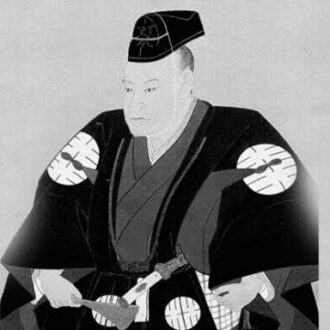
Hayashi Jussai
1768-1841Hayashi Jussai was a Confucian scholar of the late Edo period. Born the third son of Matsudaira Norimori, lord of Iwamura Domain, his grandfather was Matsudaira Norisato, who led the Kyoho Reforms, economic and cultural policies implemented by eighth shogun, Tokugawa Yoshimune.
Jussai studied Confucianism from childhood, and in 1793, aged 26, was ordered by the shogunate to be adopted into the elite Hayashi family, whose lineage had ceased with the death of leading Confucian scholar Hayashi Kinpo, and so he became the leader of the Neo-Confucian school from a young age. Jussai reformed the Shogunate’s Shoheizaka Gakumonjo school and worked to improve education. One of his famous disciples was Sato Issai, who was also from Iwamura Domain.
-
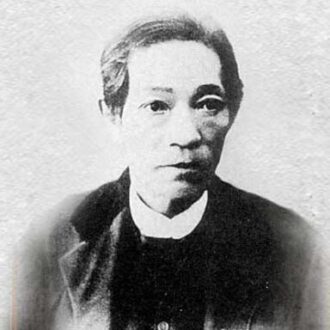
Hayashi Yuteki
1837-1901Iwamura Domain born Hayashi Yuteki was the domain’s doctor. He studied Dutch and English sciences at Keio Gijuku, a university founded by the famous Japanese enlightened thinker and educator, Fukuzawa Yukichi. While working as a doctor, he was entrusted with Fukuzawa Yukichi’s business’ and opened a bookstore in Yokohama. This became the current major bookstore, Maruzen. An active businessman, he was also the founder of Yokohama Specie Bank, predecessor of the Mitsubishi UFJ Bank, one of Japan’s three major megabanks.
-
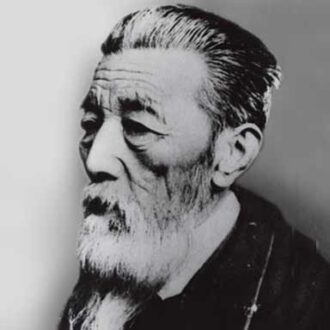
Asami Yoichiemon
1843-1924Asami Yoichiemon was a Meiji era businessman and politician who served as the Speaker of the Gifu Prefectural Assembly and as a member of the House of Representatives. He was a village headman who strove to rebuild Iwamura township following the turbulent late Edo transition period into the early Meiji era. He spent his own finances to restore Iwamura castle town, which had been in decline due to the many political, financial, social and transportation changes of the Meiji era. In 1906, despite many difficulties, he opened the nation’s 13th electric railway, the Iwamura Electric Tramway. A bronze statue of him stands in Iwamura Castle Ruins Park to commemorate his achievements.
-
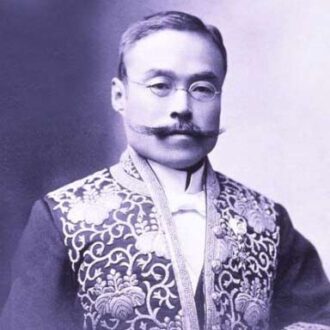
Miyoshi Manabu
1861-1939Botanist, Doctor of Science, and a world leader in the research of cherry blossoms and irises, Miyoshi Manabu was born in the Edo residence of an Iwamura clan samurai and spent his childhood in the nature-rich environs of Iwamura.
At the age of 18, he became principal of an elementary school, before attending Tokyo University’s graduate school, where he continued his research in botany. While there he was ordered to study in Germany, and on returning to Japan, received his Doctor of Science degree becoming a professor at Tokyo University aged just 35. During his time as a Tokyo University professor, he is said to have published 100 research papers and wrote 100 books.
As Meiji period industries developed, ancient scenic places, natural landscapes, famous and giant trees were destroyed, and many precious natural features were pushed to the brink of extinction by human intervention. Feeling intense anger and sadness at this, Miyoshi Manabu appealed that things of natural, historical and academic value should be protected by law. His efforts led to the 1919 enacted Law for the Preservation of Historic Sites and Natural Monuments. He devoted himself to the protection of nature until just before his death. When Dr. Albert Einstein visited Japan in 1922, Miyoshi was his host, showing him around Tokyo’s Koishikawa Botanical Garden.
-
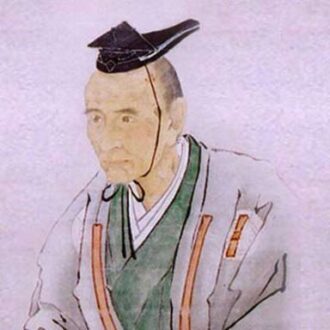
Sato Issai
1772-1859A Confucian scholar, Issai was born in Edo as the second son of Sato Nobuyoshi, a chief retainer of the Iwamura clan. He loved reading from an early age, and was skilled in swimming, horse archery, sword and spear training, as well as mastering the Ogasawara school of etiquette.
At the age of 34, he became the head of the Hayashi clan, the leading Neo-Confucian school, and together with Hayashi Jussai taught many students. At age 55, he was added to the ranks of Matsudaira Noriyoshi, the lord of Iwamura Domain, and devoted himself to the domain’s administration. Hayashi Jussai died aged 74 in 1841, and so at the age of 70, Issei became president of the shogunate controlled Shoheizaka Gakumonjo school. In 1854, at the age of 83, he devoted himself to the creation of diplomatic documents for the Treaty of Peace and Amity between the United States and Japan.
Issei’s book, Genshi Shiroku, is said to have been a major influence on leading figures such as Saigo Takamori, Katsu Kaishu, and Sakamoto Ryoma, who led Japan out of the feudal Edo period, into the Meiji Restoration.
-
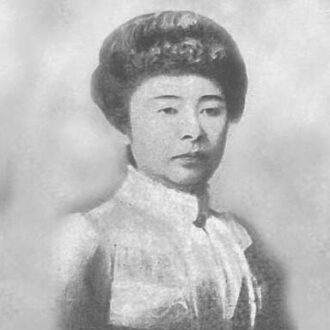
Shimoda Utako
1854-1936Educator and poet Shimoda Utako was a daughter of the Hirao clan, samurai serving the Matsudaira clan, lords of the Iwamura domain. Her childhood name was Seki
Both her grandfather and father were scholars, and Utako was also exposed to learning from an early age, composing traditional Japanese waka and Chinese poetry.In 1872, at the age of 18, she studied Confucianism in Edo, and the following year she began working for the Imperial Household Ministry. She presented some poetry to the Empress, who recognized her literary talent and gave her the name “Utako.” At the age of 20, she succeeded the Hirao family as head, but became entangled in a power struggle within the domain, and spent a difficult time under house arrest, with her position and stipend suspended.
From there, Utako devoted herself to the education of women, founding schools such as Jissen Women’s Academy and serving as its principal, becoming a pioneer in women’s education during the Meiji and Taisho eras (1868-1926).
Shimoda Utako was commissioned by Emperor Meiji to educate the Imperial princess, and toured eight European countries and the United States. In England, she had an audience with Queen Victoria at Buckingham Palace. On this occasion, she wore the keiko, traditional Japanese formal noble court attire, which impressed the Queen and British upper class.
Notable People

